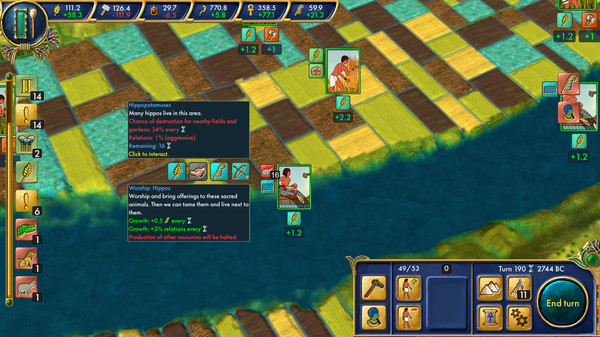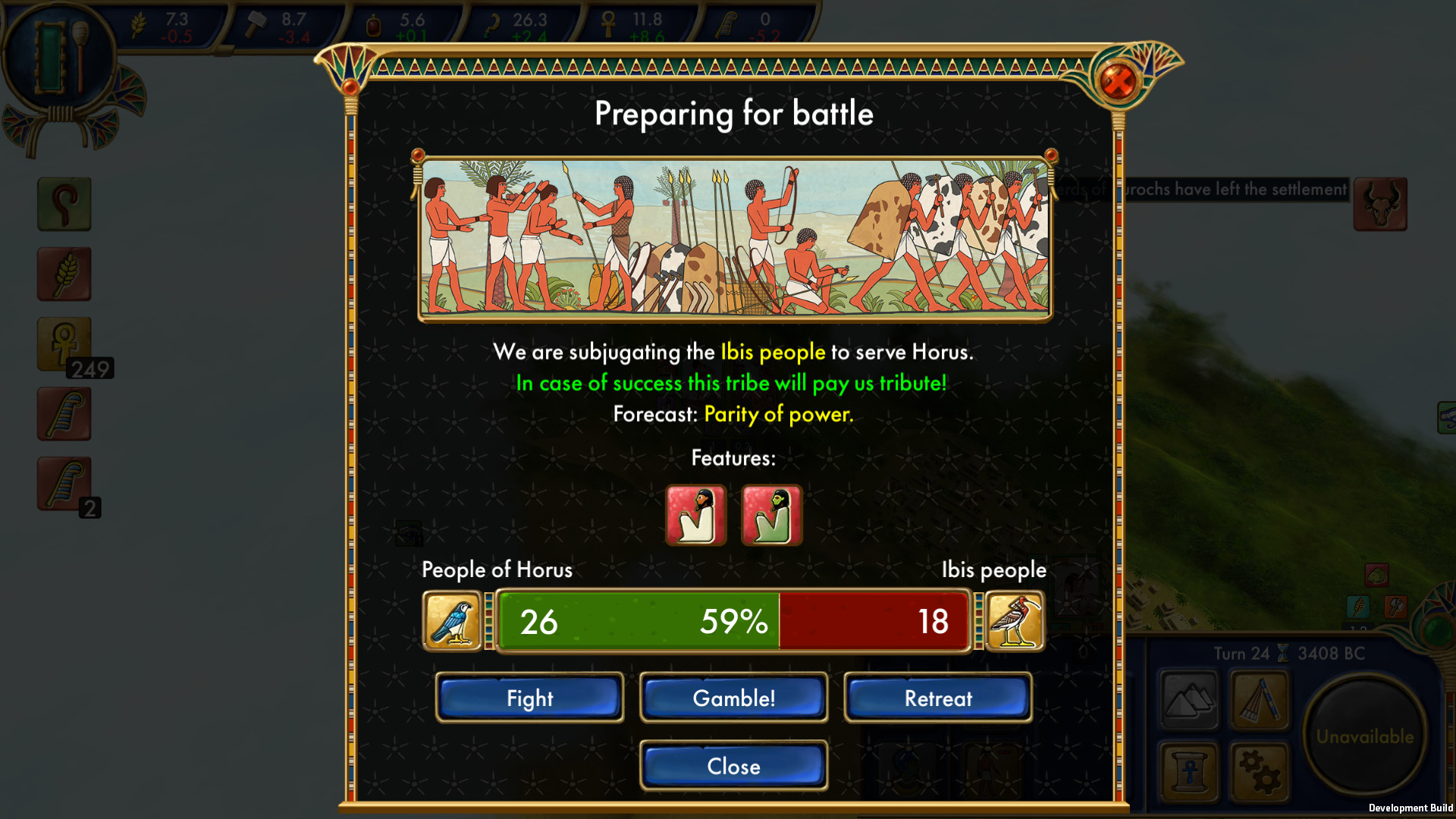Learning Objective
The 'Old Kingdom' is a period of time during the history of Ancient Egypt. It lasted from 2575 BC to 2150 BC. Over these 400 years, Egypt had a strong central government and a prosperous economy. The Old Kingdom is most famous as a time when many pyramids were built. After the Old Kingdom ended, marked by the decline of the power of Pharaohs. After an intermediate period, the Middle Kingdom emerged. The Middle Kingdom pharaohs, improved trade and transportation but were invaded by the Hyksos, who were Asian nomads. The Hyksos remained in power in Egypt.
- Explain the reasons for the rise and fall of the Old Kingdom
Key Points
- The Old Kingdom is the name commonly given to the period when Egypt gained in complexity and achievement, spanning from the Third Dynasty through the Sixth Dynasty (2686-2181 BCE).
- The royal capital of Egypt during the Old Kingdom was located at Memphis, where the first notable king of the Old Kingdom, Djoser, established his court.
- In the Third Dynasty, formerly independent ancient Egyptian states became known as Nomes, which were ruled solely by the pharaoh. The former rulers of these states were subsequently forced to assume the role of governors, or otherwise work in tax collection.
- Egyptians during this Dynasty worshipped their pharaoh as a god, and believed that he ensured the stability of the cycles that were responsible for the annual flooding of the Nile. This flooding was necessary for their crops.
- The Fourth Dynasty saw multiple large-scale construction projects under pharaohs Sneferu, Khufu, and Khufu’s sons Djedefra and Khafra, including the famous pyramid and Sphinx at Giza.
- The Fifth Dynasty saw changes in religious beliefs, including the rise of the cult of the sun god Ra, and the deity Osiris.
Terms
Ra
The sun god, or the supreme Egyptian deity, worshipped as the creator of all life, and usually portrayed with a falcon’s head bearing a solar disc.
Osiris
The Egyptian god of the underworld, and husband and brother of Isis.
Nomes
Subnational, administrative division of Ancient Egypt.
nomarchs
Semi-feudal rulers of Ancient Egyptian provinces.
Old Kingdom
Encompassing the Third to Eighth Dynasties, the name commonly given to the period in the 3rd millennium BCE, when Egypt attained its first continuous peak of complexity and achievement.
Djoser
An ancient Egyptian pharaoh of the Third Dynasty, and the founder of the Old Kingdom.
necropolis
A cemetery, especially a large one belonging to an ancient city.
Sneferu

A king of the Fourth Dynasty, who used the greatest mass of stones in building pyramids.
The Old Kingdom is the name commonly given to the period from the Third Dynasty through the Sixth Dynasty (2686-2181 BCE), when Egypt gained in complexity and achievement. The Old Kingdom is the first of three so-called “Kingdom” periods that mark the high points of civilization in the Nile Valley. During this time, a new type of pyramid (the step) was created, as well as many other massive building projects, including the Sphinx. Additionally, trade became more widespread, new religious ideas were born, and the strong centralized government was subtly weakened and finally collapsed.
The king (not yet called Pharaoh) of Egypt during this period resided in the new royal capital, Memphis. He was considered a living god, and was believed to ensure the annual flooding of the Nile. This flooding was necessary for crop growth. The Old Kingdom is perhaps best known for a large number of pyramids, which were constructed as royal burial places. Thus, the period of the Old Kingdom is often called “The Age of the Pyramids.”
Egypt’s Old Kingdom was also a dynamic period in the development of Egyptian art. Sculptors created early portraits, the first life-size statues, and perfected the art of carving intricate relief decoration. These had two principal functions: to ensure an ordered existence, and to defeat death by preserving life in the next world.
The first notable king of the Old Kingdom was Djoser (reigned from 2691-2625 BCE) of the Third Dynasty, who ordered the construction of the step pyramid in Memphis’ necropolis, Saqqara. It was in this era that formerly independent ancient Egyptian states became known as nomes, and were ruled solely by the king. The former rulers of these states were forced to assume the role of governors or tax collectors.
The Old Kingdom and its royal power reached a zenith under the Fourth Dynasty, which began with Sneferu (2613-2589 BCE). Using a greater mass of stones than any other king, he built three pyramids: Meidum, the Bent Pyramid, and the Red Pyramid. He also sent his military into Sinai, Nubia and Libya, and began to trade with Lebanon for cedar.
Sneferu was succeeded by his (in)famous son, Khufu (2589-2566 BCE), who built the Great Pyramid of Giza. After Khufu’s death, one of his sons built the second pyramid, and the Sphinx in Giza. Creating these massive projects required a centralized government with strong powers, sophistication and prosperity. Builders of the pyramids were not slaves but peasants, working in the farming off-season, along with specialists like stone cutters, mathematicians, and priests. Each household needed to provide a worker for these projects, although the wealthy could have a substitute.
The later kings of the Fourth Dynasty were king Menkaura (2532-2504 BCE), who built the smallest pyramid in Giza, Shepseskaf (2504-2498 BCE), and perhaps Djedefptah (2498-2496 BCE). During this period, there were military expeditions into Canaan and Nubia, spreading Egyptian influence along the Nile into modern-day Sudan.

The Fifth Dynasty began with Userkaf (2494-2487 BCE), and with several religious changes. The cult of the sun god Ra, and temples built for him, began to grow in importance during the Fifth Dynasty. This lessened efforts to build pyramids. Funerary prayers on royal tombs (called Pyramid Texts) appeared, and the cult of the deity Osiris ascended in importance.
Egyptians began to build ships to trade across maritime routes. Goods included ebony, incense, gold, and copper. They traded with Lebanon for cedar, and perhaps with modern-day Somalia for other goods. Ships were held together by tightly tied ropes.
The power of the king and central government declined during this period, while that of nomarchs (regional governors) increased. These nomarchs were not part of the royal family. They passed down the title through their lineage, thus creating local dynasties that were not under the control of the king. Internal disorder resulted during and after the long reign of Pepi II (2278-2184 BCE), due to succession struggles, and eventually led to civil war. The final blow was a severe drought between 2200-2150 BCE, which prevented Nile flooding. Famine, conflict, and collapse beset the Old Kingdom for decades.
Sources
The best resource for schools about Ancient Egypt
In Ancient Egypt Hieroglyphs were called “the words of God” and were used mainly by the priests.
Egyptian Hieroglyphic Alphabet – write your name like an Ancient Egyptian
Numbers and Maths in Ancient Egypt
Kings & Queens of Ancient Egypt
A complete dynasty lists from the old kingdom to the last Pharaoh of Egypt and detailed stories of some of the most famous rulers.
Pyramids and Temples of Ancient Egypt
computer-generated reconstructions of what the pyramids and temples might have looked like when they were first built.
The Gods and Goddesses of Ancient Egypt and how they did Mummification in Ancient Egypt
Pages
- Ancient Egyptian Kings & Queens
- Checkout
- Egyptian Hieroglyphic Writing
- Egyptian Mathematics Numbers Hieroglyphs
- Egyptian Video Documentaries
- Karnak Temple
- Luxor Temple
- Pyramids Temples of Egypt
- Rebuilding Ancient Egyptian Temples in 3D
Posts
Egypt: Old Kingdom For Mac Computers

Egyptian Hieroglyphics 2018
This is a brand new version that now works on Windows 10, MAC, iPad, Android and all mobile phones.
Old Kingdom Egypt Map
